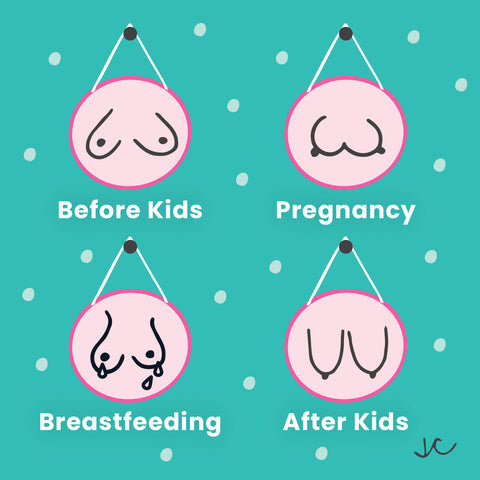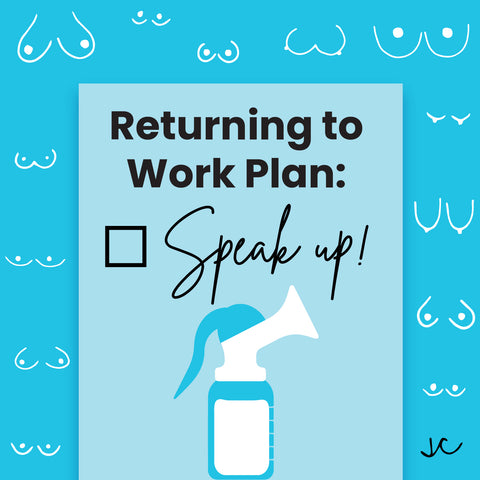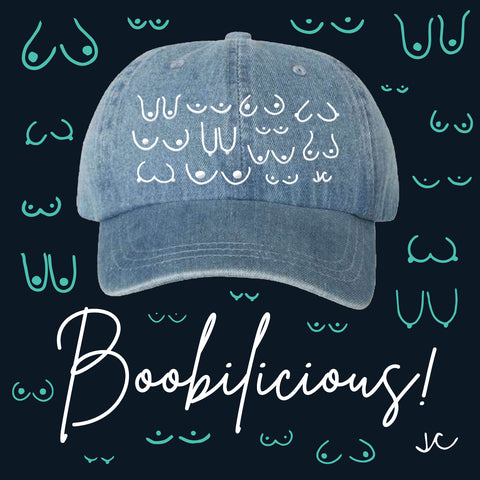The Incredible History of Breastfeeding

Estimated read time: 12 minutes
Let's dive into the history of breastfeeding and more about World Breastfeeding Week!
Since homo sapiens evolved some six million years ago, mothers have been breastfeeding their babies and infants…and probably dealing with the same struggles and challenges we deal with today!
The history of breastfeeding has been shaped by different cultures, laws, societal norms, and differing opinions, and it’s pretty darn fascinating.
It does make you wonder though, why is a natural and normal human function, one that literally sustains the life of a child, so taboo. Luckily movements such as World Breastfeeding Week and our very own Boobment are paving the way to bring more awareness to breastfeeding issues and challenges, as well as to celebrate every nursing and pumping mama’s amazing achievements.
But, let’s look a little closer at the history of breastfeeding, so we can get a better understanding of how the women of the past have helped pave the way for us, our daughters, and all future breastfeeding mamas.
In this article:
- The history of breastfeeding
- What about formula?
- What is a wet nurse?
- Breastfeeding in different cultures
- World Breastfeeding Week
The history of breastfeeding
The history of breastfeeding goes way back with the oldest known written sources mentioning breastfeeding coming from the Near East, dating back to 3000 BC.
But, let’s be honest, it’s been a vital part of being a mother since time began. And it has an awesome history around the world, including the knowledge of breastfeeding benefits rooted in Ancient Greek mythology.
Have you heard this story? It’s a good one! God Zeus wanted his son Hercules to have more powers, as his mother was a mortal. To make that happen, Zeus snuck Hercules to breastfeed from his goddess wife Hera as she slept, as he believed her breastmilk would give him those powers.
The milk that spurted upwards is how the Milky Way got its name.
Throughout the history of breastfeeding were women known as wet nurses. We’ll look a little deeper into the history of wet nursing in a minute, but they were very significant in how babies were fed. From 1300-1600, aristocratic women would hire wet nurses to feed their babies for them. So, some mamas breastfed and others nursed other women’s babies too.
Now, we don’t know why, but women’s bodies have always been a cause for debate and political discussion, both now and throughout history. In fact, breastfeeding in some countries was made mandatory by law. In France, for example, in 1793, it was declared that if a woman didn’t breastfeed, she wouldn’t be eligible for welfare.
And in Germany around the same time, breastfeeding became a legal requirement for all healthy women.
As we head into the 20th century, breastfeeding began to be seen as old-fashioned, and in the 1950’s, formula was actually believed to be superior to breastmilk! That’s when two women started La Leche League as a grassroots group to help mamas breastfeed.
What we find amazing is the invention of the first breast pump. It might seem like a modern invention, but inventor Orwell H. Needham filed the first patent for a manual breast pump in 1854. It was a contraption that relied on bellows and tubes to express and collect the milk. The first electric pump came onto the market in 1923. Known as the Abt pump, it was designed after a cow-milking machine (nope, not joking), and was used to feed premature babies.
What about formula?
So, if a woman didn’t want to or couldn’t breastfeed, or if a mother passed away during childbirth, what were the alternatives?
As well as wet nurses, substituting human breast milk for animal milk was sometimes a necessity. While the first bottles made of clay vessels were created in 2000 BC, fast forward to 1770 and a bottle called the “bubby-pot” was invented. This was a pewter vessel with a spout for the baby to drink cow’s milk. The rubber nipple wasn’t invented till 1845, which must have made things a lot easier!
And then there was the introduction of formula.
The first formula was developed in 1865 and consisted of cow’s milk, wheat, malt flour, and potassium bicarbonate. Not exactly a great substitute for breast milk and its huge amount of benefits, but by 1924, a new formula was introduced. Similac was created with a composition closer to breastmilk.
What is a wet nurse?
How would you feel about paying a stranger to nurse your baby? Or how about being paid to nurse someone else’s baby? While this might seem like a bizarre concept in 2023, if we look back in history, wet nurses were a pretty common thing.
OK, so what is a wet nurse?
In short, a wet nurse is a lactating woman who breastfeeds a child who isn’t her own. Now, back in the day, and we’re talking about well over a hundred years ago and more and before the invention of formula and feeding bottles, aristocratic women, and other women of wealth, often hired wet nurses to feed their babies, as breastfeeding was seen as unfashionable.
Commonly, wet nursing was a career choice for poor and lower-class women, but the Industrial Revolution changed all that. As more and more women were required to work, those with lower incomes also used wet nurses, as they had to work and were unable to breastfeed their babies. This led to more “rural poor” or peasant women becoming wet nurses.
And then there is also the traumatic history of Black women during and after slavery as wet nurses for white women.
History of wet nursing
The history of wet nursing is Tit-ally riveting. While it used to be a highly organized and well-paid profession, wet nurses and their duties all but disappeared by 1900.
According to The National Library of Medicine, wet nursing began as early as 2000 BC, where it evolved from an alternative of need to an alternative of choice. Wet nurses even had contracts and laws involved, making it an official profession.
If you look back in history, the story of wet nurses is valid and fascinating. For example, in Israel, as early as 2000 BC, children were seen as a blessing (as they always are) and breastfeeding was considered a religious obligation, but if breastfeeding wasn’t possible, or the mother passed away, a wet nurse stepped in.
During Ancient Egyptian times, there is also evidence of women who found breastfeeding challenging, and wet nursing was the primary alternative feeding method. In Ancient Greece, women of high social status frequently used wet nurses to feed their infants, and during the Roman Empire, contracts were made with wet nurses to feed abandoned babies.
And so it goes on from the Middle Ages through to the Renaissance period. Throughout the 1600s, half of all European mothers were sending their babies to be wet nursed. This continued until the end of the 19th century when the availability of animal milk and then formula became a more common substitute for wet nursing.
Breastfeeding in different cultures
Breastfeeding has had a pretty turbulent history in the Western world, resulting in a bunch of political conversations, debates, and laws (and yep, this is still a thing).
In fact, laws and amendments have been made in the US regarding breastfeeding over the last twenty years or so. In 2010, a new amendment to the federal Fair Labor Standards Act required employers to provide private lactation spaces for non-exempt breastfeeding employees.
And breastfeeding in public ONLY became legal in all 50 states in 2018 when Utah and Idaho finally joined the party. And in 2019, California passed a law requiring all employers to provide all breastfeeding employees with a clean, safe, lactation space.
So, what about breastfeeding in other cultures around the world?
Let’s have a look at a few:
- In strict Islamic regimes such as Iran and Saudi Arabia, breastfeeding in public is forbidden, however, it is also seen as a religious duty.
- In Mongolia, breastfeeding tends to continue until after the second birthday. Breastmilk is also considered valuable and is traded for necessities in poorer neighborhoods.
- Rwanda has the highest breastfeeding rate in the world with 90% of mamas breastfeeding.
- The average age of weaning in Bangladesh is 33 months.
- In the Philippines, papaya leaves and sugar cane stalks are stroked over the mother’s breasts to encourage a good milk supply in a special lactation ceremony.
- Public breastfeeding is still frowned upon in India.
- Japan practices ancient rituals such as breastfeeding massages to encourage milk production.
World Breastfeeding Week
Founded in 1992 by World Alliance for Breastfeeding Action (WABA), World Breastfeeding Week begins on August 1st every year.
But, what is the purpose of World Breastfeeding Week?
World Breastfeeding Week (sometimes known as WBW) is a global campaign to raise awareness and inspire action on all themes related to breastfeeding as well as to encourage mamas during their breastfeeding journeys.
It was first launched to galvanize public awareness and support and over the years since its inception, it has transformed into a worldwide celebration in nearly 120 countries.
How cool is that?
And while WBW’s main purpose was to educate the public about breastfeeding and the benefits it brings to both mothers and babies, it also advocates for change. Yep, just like our Boobment, it helps bring awareness for more support for working mamas, increasing the rate of exclusive breastfeeding, and providing baby-friendly hospitals.
Looking for some World Breastfeeding Week ideas?
Here’s what you can do to celebrate your amazing Titties for World Breastfeeding Week:
- Organize a fun Latch On event at your local park or a community space. Let other mamas know that this is an event to support and encourage each other. You can plan games, host a breastfeeding speaker, or just enjoy a chance to talk and relax with fellow breastfeeding superheroes. At a time when many women still feel uncomfortable breastfeeding in public, this can be an opportunity to break the stigma and feel proud about your amazing achievements.
- Get online and share your brelfie (breastfeeding selfie) with the world. Use the hashtags #brelfie, #brelfies, and #bravebrelfie to share your amazing breastfeeding journey.
- Join the Boobment! While we’re talking about going online, World Breastfeeding Week is the perfect time to join our Boobment and talk about your breastfeeding experiences. Don’t be shy mama. You never know who your story might help.
- Get yourself a keepsake to celebrate your own breastfeeding journey.
- Gather your breastfeeding friends and enjoy a coffee or lunch together with your babies. There is nothing more powerful than seeing incredible, strong women nursing together out in public.
- Offer to speak at a breastfeeding support group. If you feel confident about Boobing, or you’re on an extended breastfeeding journey then reach out to your local breastfeeding support group and offer to speak to other moms about how you’re getting on.
However you choose to celebrate World Breastfeeding Week, get those Titties out and do it loud and proud!
You're a part of something truly special mama
Women across the globe have been breastfeeding their babes since the dawn of time. And you are part of that story, mama.
While they is still a stigma around breastfeeding in public, proud mothers around the world have been coming together to feed their little ones how they want to. And we are so inspired by each and every one of you.
If you take part in World Breastfeeding Week, we’d love to see what you get up to. Make sure you tag us on Instagram when you Whip a Titty Out!
At Titty City Design, we believe that every boobie is beautiful, and that should be celebrated. We are a female-owned and operated, small business here to spread self-love and body positivity with our line of boob apparel, boob accessories, and boob-themed decor and products for the home. A portion of our proceeds goes to help support postpartum people and breast cancer patients.
Unique Gifts that Celebrate Breastfeeding Moms















